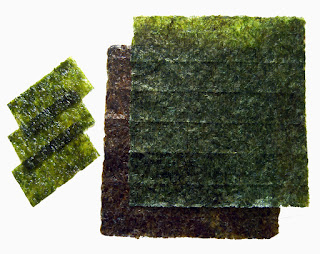A traditional Japanese breakfast is completely different from the other kinds of breakfast you'll ever experience. It is a complete meal that one could enjoy at lunch or dinner. Although a Japanese breakfast comprises what Western people might view as a heavy meal that could pass for lunch or dinner, it is not intended to be too filling. Portion sizes for breakfast are well-adjusted to meet one's appetite, and dishes tend to lighter, for example, they tend not to be greasy, deep fried, or rich.
Well, the traditional Japanese breakfast has 7 variations of food and here it is:
1. Steamed Rice (Gohan)
- Plain steamed rice, either white rice (hakumai) or for a healthier option brown rice (genmai), is an essential dish to pair the proteins and side dishes of breakfast and should be included.
2. Fermented Soy Beans (Natto)
- Natto is usually served as a topping for steamed rice, and this dish of natto rice is a high protein Japanese breakfast staple. It is a simple dish of fermented soybeans with a strong aroma and greasy texture. It is seasoned with soy sauce, with optional ingredients such as chopped green onions, dried bonito shavings (katsuobushi), spicy mustard (karashi), sliced dried and seasoned seaweed (kizaminori), or other flavor add-ins. Packed natto is available in the refrigerated section of Japanese and Asian grocery stores.
3. Grilled Fish (Yakizakana)
- Fish is a favorite breakfast protein staple and is either broiled in the oven or pan-fried. It is seasoned simply with salt, and salmon is a favorite for Japanese breakfasts. Another popular fish is dried horse mackerel (aji), but any favorite type of fish may be enjoyed for breakfast.
4. Pickled Vegetables (Tsukemono)
- Tsukemono is a staple side dish in Japanese cuisine as it is meant to accompany any type of rice dish. One well-known type of tsukemono is pickled plum, known as umeboshi. It goes well with both plain steamed rice and rice porridge. A wide assortment of pickles is available in the refrigerated section of Japanese and Asian grocery stores.
5. Seasoned Dried Seaweed (Nori)
- Dried and seasoned seaweed (ajitsuke nori) is meant to be eaten with steamed rice. Since it is seasoned, it can be enjoyed as is, with rice, but can also be dipped in soy sauce and then wrapped with rice. Seaweed with rice is commonly enjoyed for breakfast.
6. Vegetable Side Dishes (Kobachi)
- Vegetables are very common in Japanese breakfasts. These are small portions, and these types of small dishes are known as kobachi. Aside from pickles and seaweed, both cooked vegetables, as well as fresh salads may be included in a traditional Japanese breakfast.
7. Miso Soup (Miso Shiru)
- Miso soup is a traditional Japanese soup from fermented soybean paste (miso), and a dashi broth. It usually has tofu, wakame seaweed, chopped green onion, Japanese mushrooms, aburaage (deep-fried tofu), clams, or other seasonal ingredients. Miso soup made from scratch is common in Japanese households, but pre-seasoned dashi infused miso paste, as well as instant miso soup packets (available in both dried and wet packs) for individual use, are also readily available for sale.
THANKS FOR READING! <3
Like our page on Facebook : https://www.facebook.com/NagoyaksSushi-1796284270633567/ or
Follow us on Twitter: https://twitter.com/Nagoya_KS








No comments:
Post a Comment